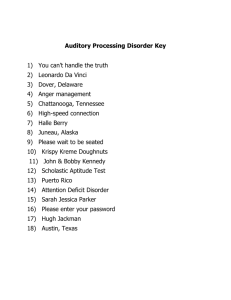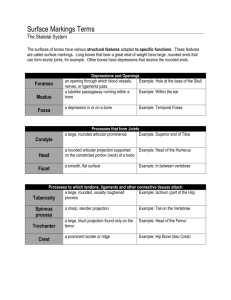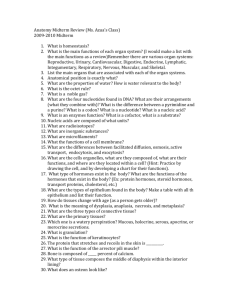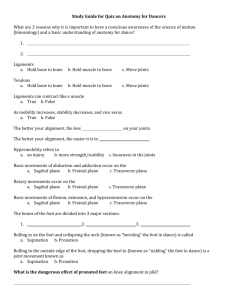769 - Museum of London
advertisement
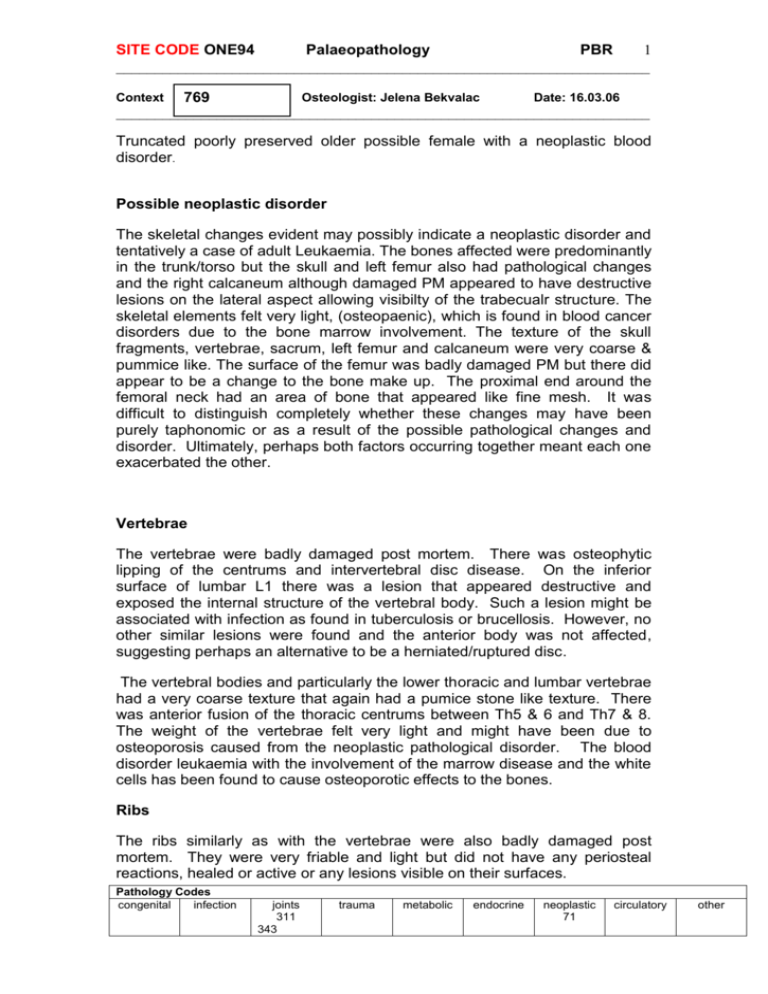
1 SITE CODE ONE94 Palaeopathology PBR _____________________________________________________________________ Osteologist: Jelena Bekvalac Date: 16.03.06 769 _____________________________________________________________________ Context Truncated poorly preserved older possible female with a neoplastic blood disorder. Possible neoplastic disorder The skeletal changes evident may possibly indicate a neoplastic disorder and tentatively a case of adult Leukaemia. The bones affected were predominantly in the trunk/torso but the skull and left femur also had pathological changes and the right calcaneum although damaged PM appeared to have destructive lesions on the lateral aspect allowing visibilty of the trabecualr structure. The skeletal elements felt very light, (osteopaenic), which is found in blood cancer disorders due to the bone marrow involvement. The texture of the skull fragments, vertebrae, sacrum, left femur and calcaneum were very coarse & pummice like. The surface of the femur was badly damaged PM but there did appear to be a change to the bone make up. The proximal end around the femoral neck had an area of bone that appeared like fine mesh. It was difficult to distinguish completely whether these changes may have been purely taphonomic or as a result of the possible pathological changes and disorder. Ultimately, perhaps both factors occurring together meant each one exacerbated the other. Vertebrae The vertebrae were badly damaged post mortem. There was osteophytic lipping of the centrums and intervertebral disc disease. On the inferior surface of lumbar L1 there was a lesion that appeared destructive and exposed the internal structure of the vertebral body. Such a lesion might be associated with infection as found in tuberculosis or brucellosis. However, no other similar lesions were found and the anterior body was not affected, suggesting perhaps an alternative to be a herniated/ruptured disc. The vertebral bodies and particularly the lower thoracic and lumbar vertebrae had a very coarse texture that again had a pumice stone like texture. There was anterior fusion of the thoracic centrums between Th5 & 6 and Th7 & 8. The weight of the vertebrae felt very light and might have been due to osteoporosis caused from the neoplastic pathological disorder. The blood disorder leukaemia with the involvement of the marrow disease and the white cells has been found to cause osteoporotic effects to the bones. Ribs The ribs similarly as with the vertebrae were also badly damaged post mortem. They were very friable and light but did not have any periosteal reactions, healed or active or any lesions visible on their surfaces. Pathology Codes congenital infection joints 311 343 trauma metabolic endocrine neoplastic 71 circulatory other 2 SITE CODE ONE94 Palaeopathology PBR _____________________________________________________________________ Osteologist: Jelena Bekvalac Date: 16.03.06 769 _____________________________________________________________________ Context Right Calcaneum Damaged post mortem but also had the coarse pumice like quality to the bone. On the lateral aspect the bone not only had PM damage but also appeared to have destructive lesions allowing the trabecular structure to be exposed. Being able to see the internal structure there were areas of the trabecular bone that appeared to have become smooth and sclerotic and not the classic strut and rod structure. These changes may possibly have been part of the pathological process or perhaps an aspect of taphonomic change. Left Femur The long bones present were badly damaged post mortem. The left femur although having bad surface damage covering the shaft and loss of the distal articular surfaces did have some areas of periosteal change to the bone. At the proximal end there was almost a mesh like bone at the neck of the femur. The posterior surface of the femur had areas of porosity and small areas of remodelled bone. The cortical bone in some parts had been removed revealing the underlying structure. Again though the post mortem damage made it extremely difficult to pinpoint and identify with any degree of certainty particular pathological changes. Overall the skeletal elements that were available to examine were it appeared at least in part destroyed by a pathological disorder and a haematogenous disorder such as a blood cancer leukaemia/myeloma seemed to be the more likely option. Leaning towards adult leukaemia as a possible diagnosis compared to a multiple myeloma, in its classic sense of multiple lesions, was because there classic dispersed lytic lesions were not observed in the skeletal elements particularly the ribs and vertebrae. Pathology Codes congenital infection joints 311 343 trauma metabolic endocrine neoplastic 71 circulatory other

